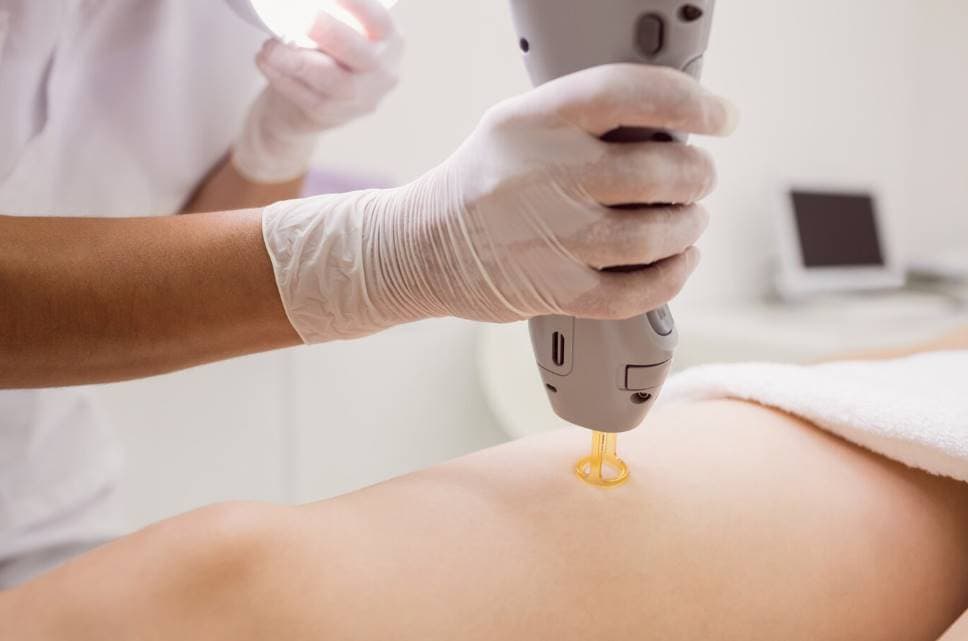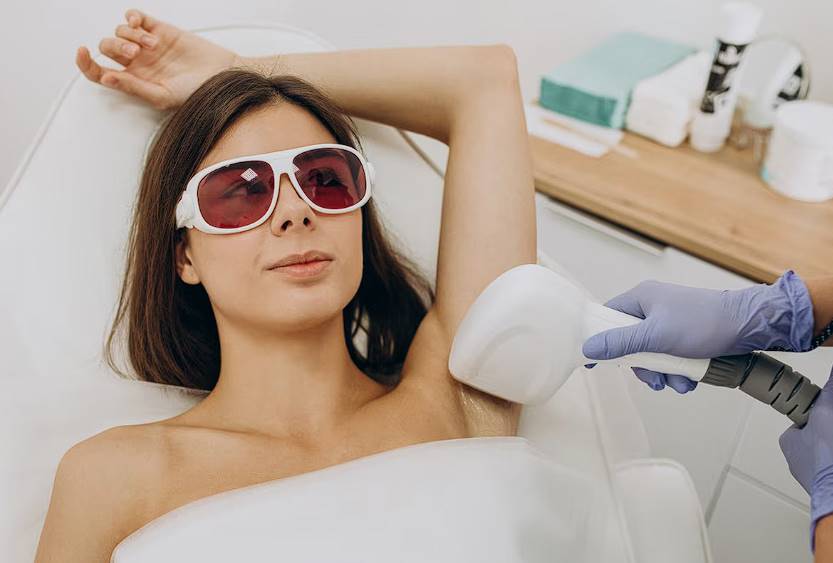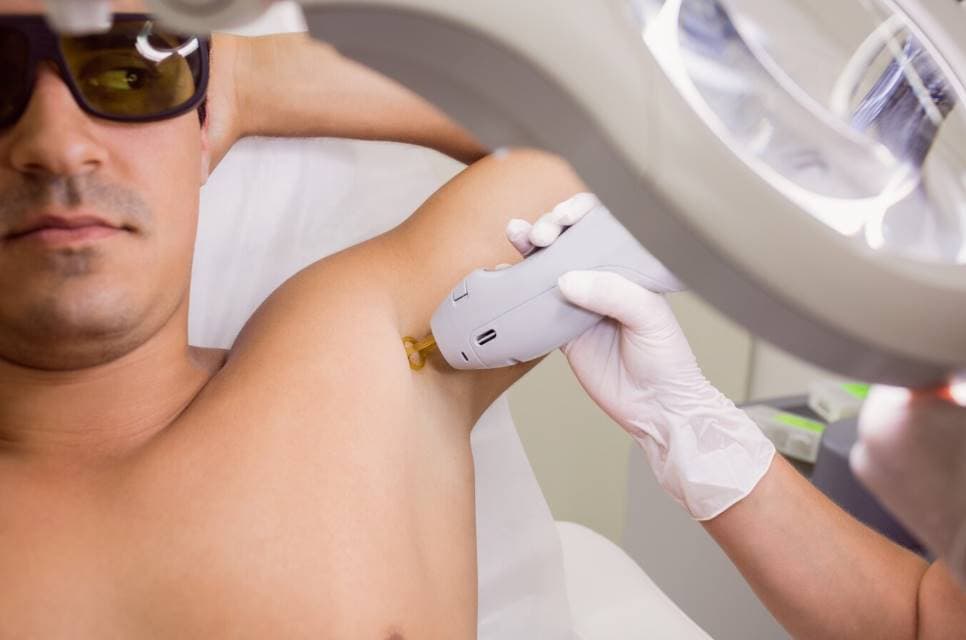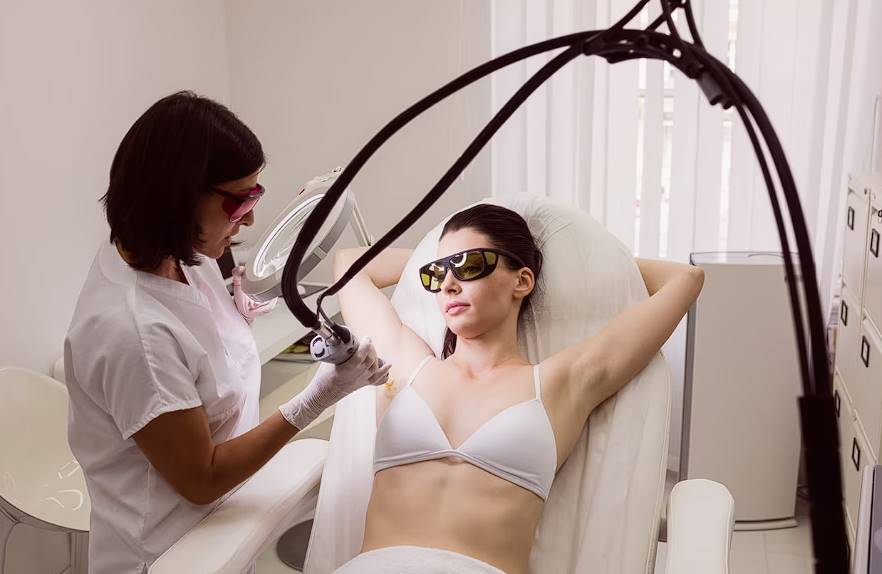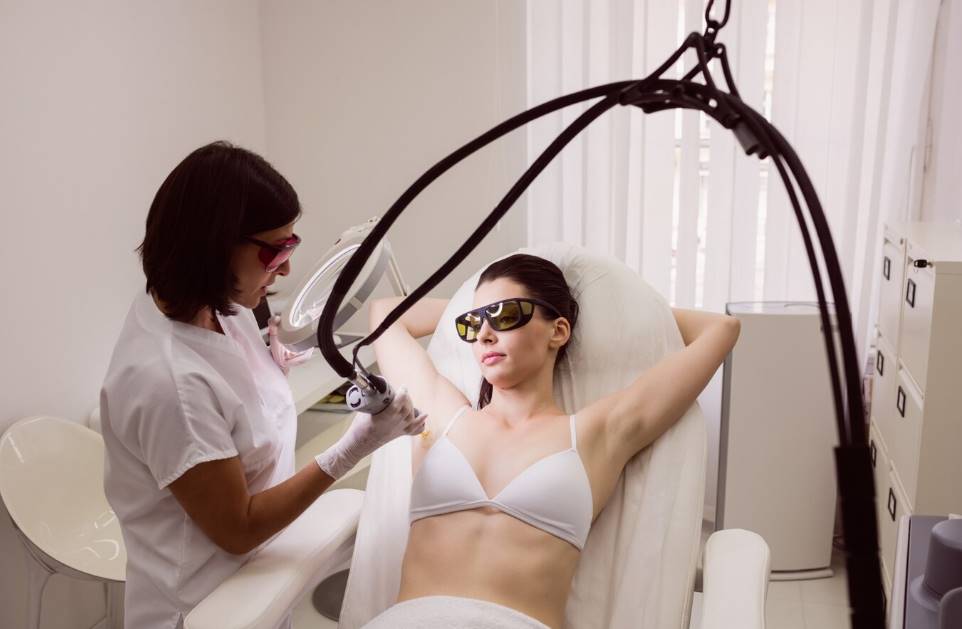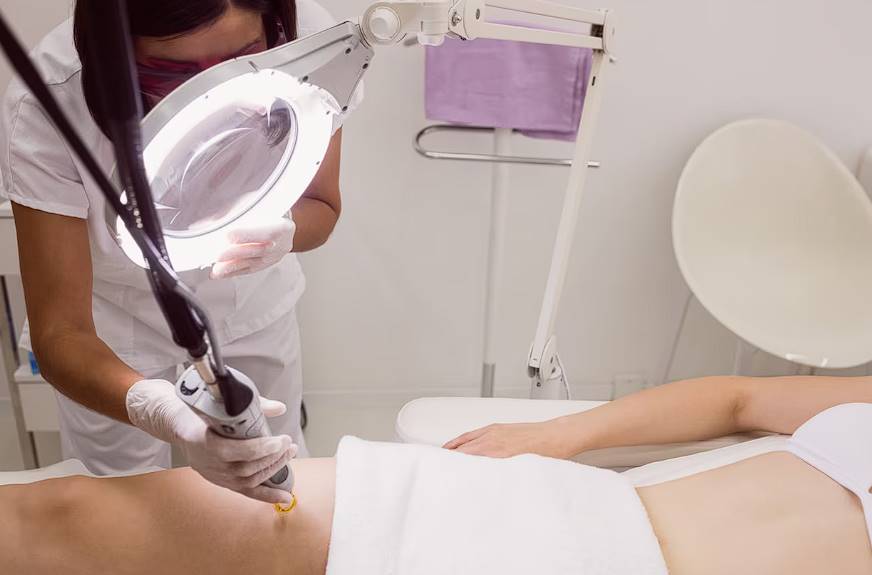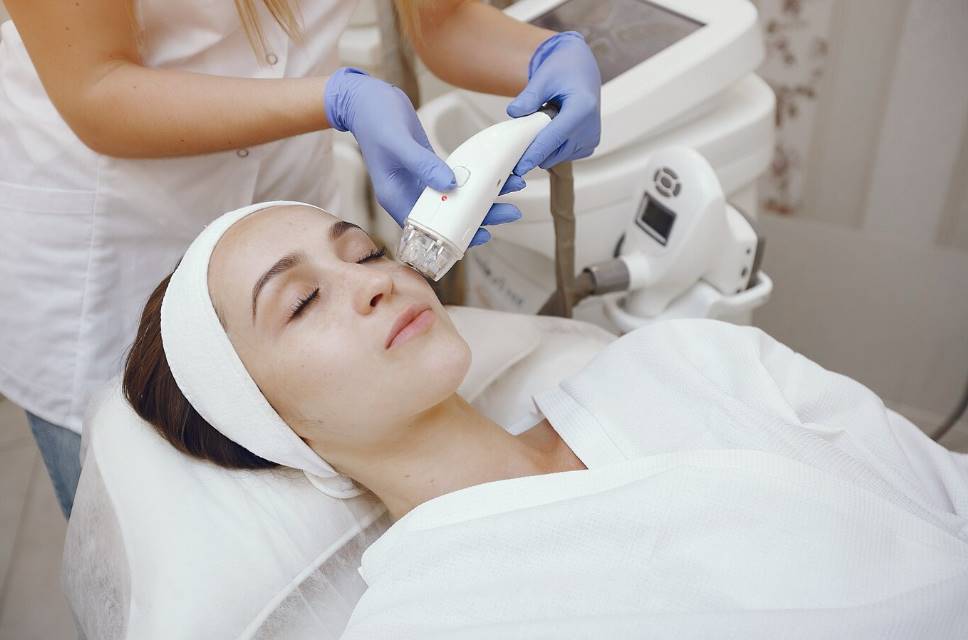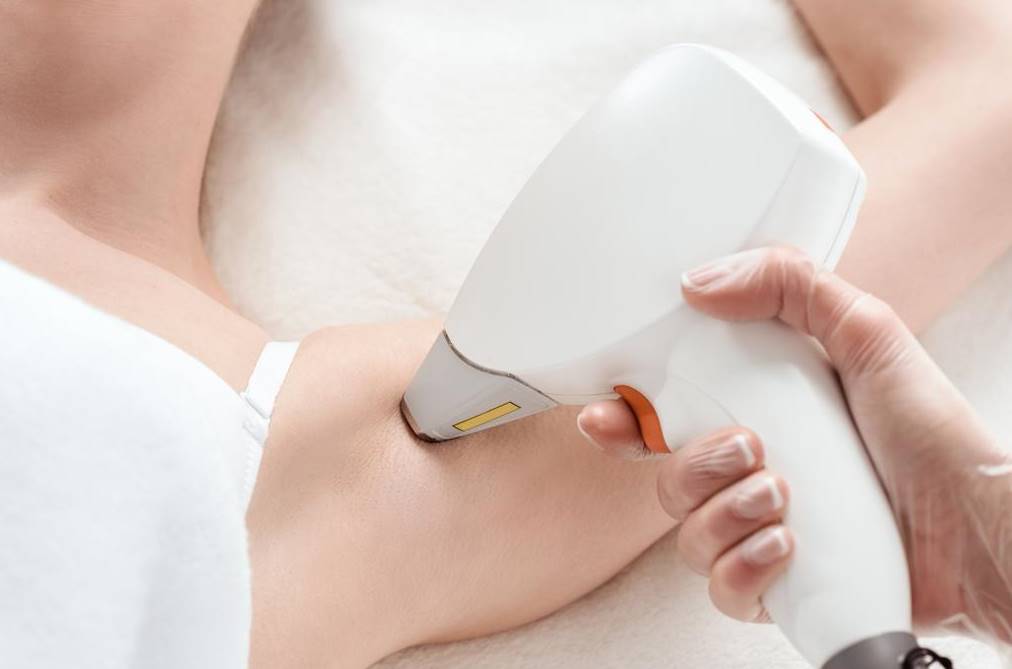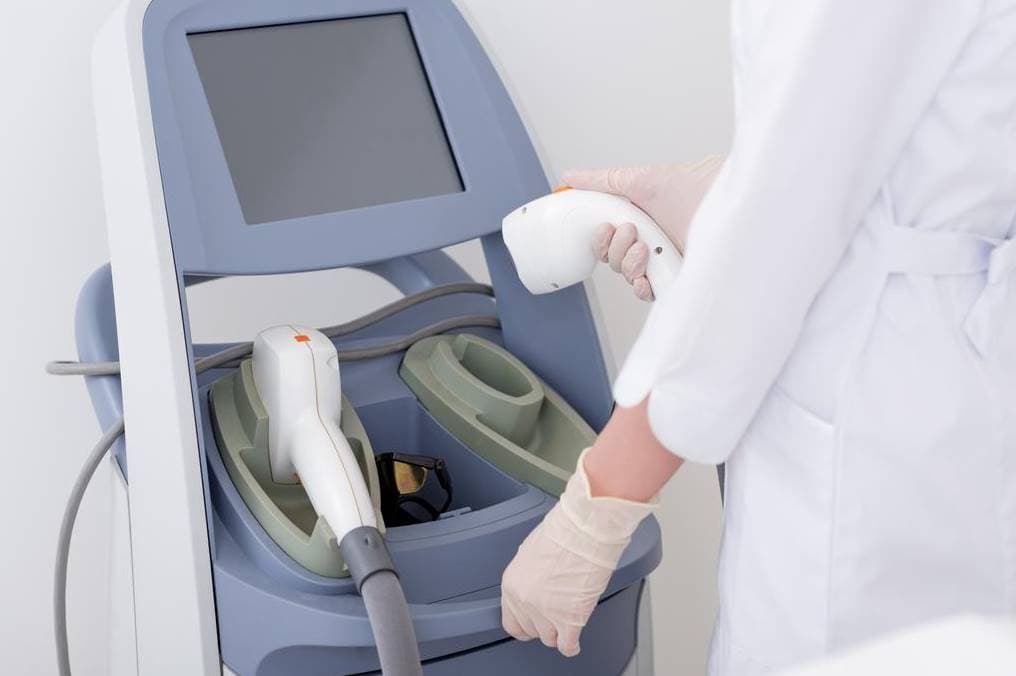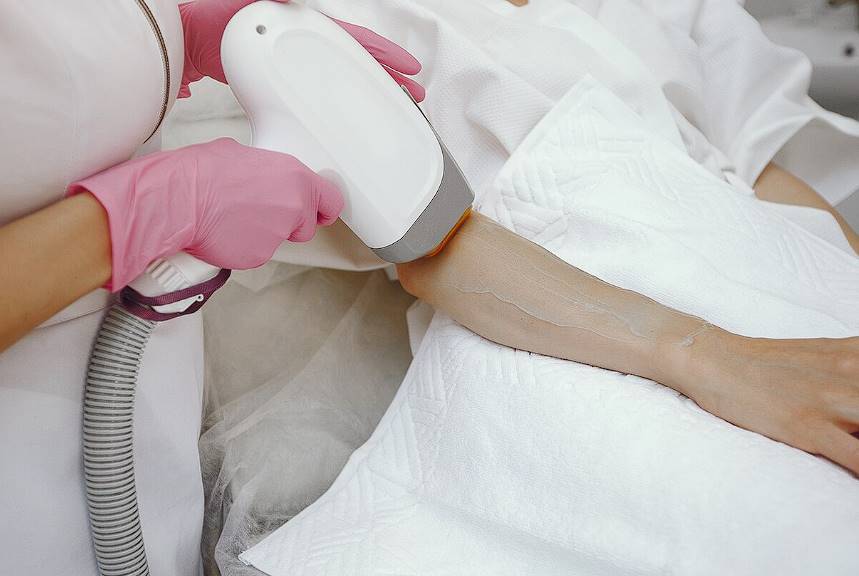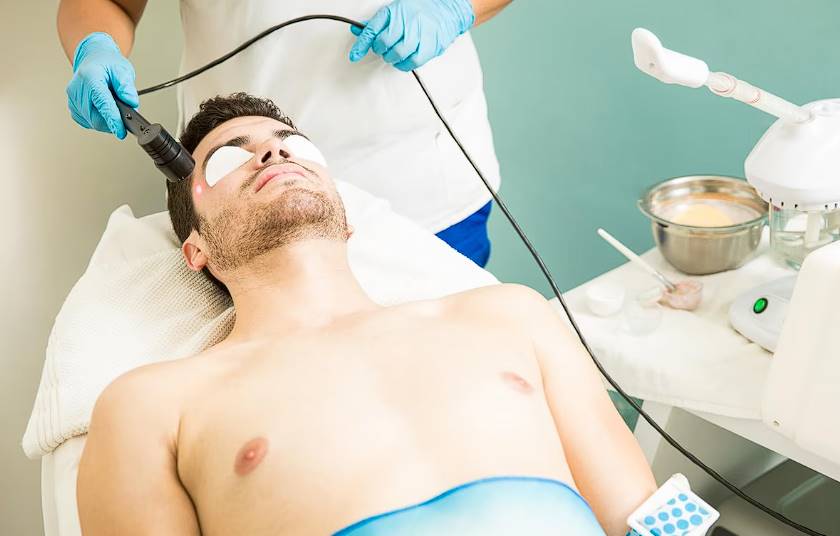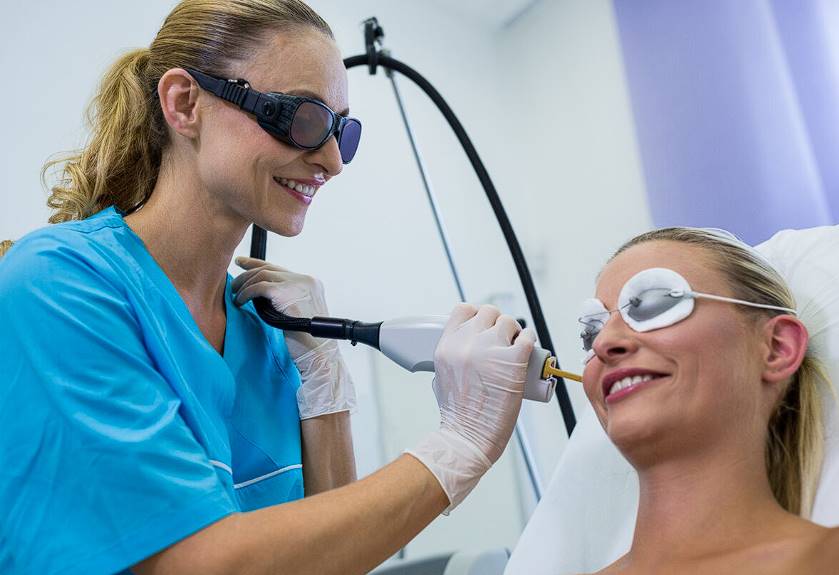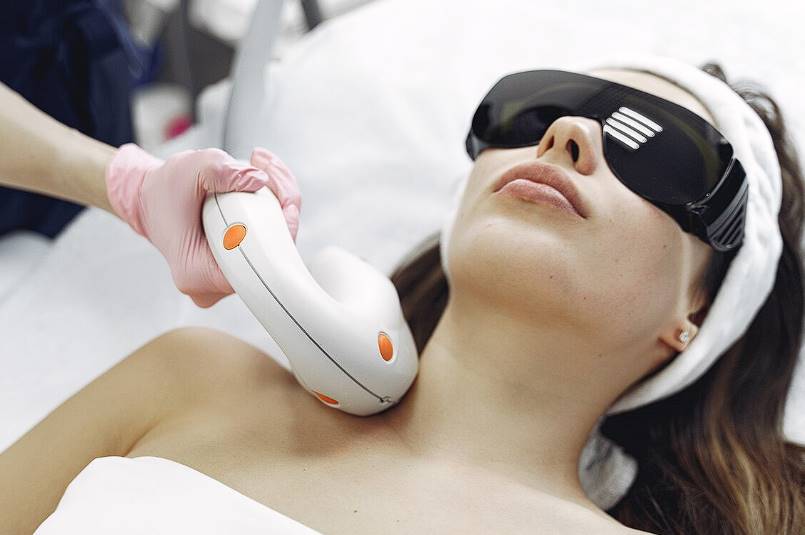Women have experimented with a wide variety of hair removal techniques over the centuries. A game-changing choice has emerged with the development of laser technology.
This book will serve as your passport to the world of laser hair removal technology, benefits, and considerations. No matter where you are on your path to hairlessness, we hope to provide you with the resources you need to make educated decisions along the way.
How Laser Hair Removal Works
The follicle is the structure to which the hair root is linked, and from which hairs emerge. A new hair grows from the follicle each time an old one comes off. A new hair won't grow from a damaged follicle. Most methods of hair removal only target the hair shaft, skipping the follicle entirely. Laser hair removal works because it causes minimal trauma to the follicle, rendering it incapable of producing new hairs.
The first step in laser hair removal is for the laser to direct a beam of intense light at the target area of the body. When the light strikes the hairs, it's converted into thermal energy. The follicle sustains some minor damage as the heat travels rapidly down the hair shaft. The hair shaft eventually breaks off, and the follicle rests in an inactive state. One study found that after just one session of laser hair removal, hair regrowth was reduced by 25%.
Key Benefits Of Laser Hair Removal
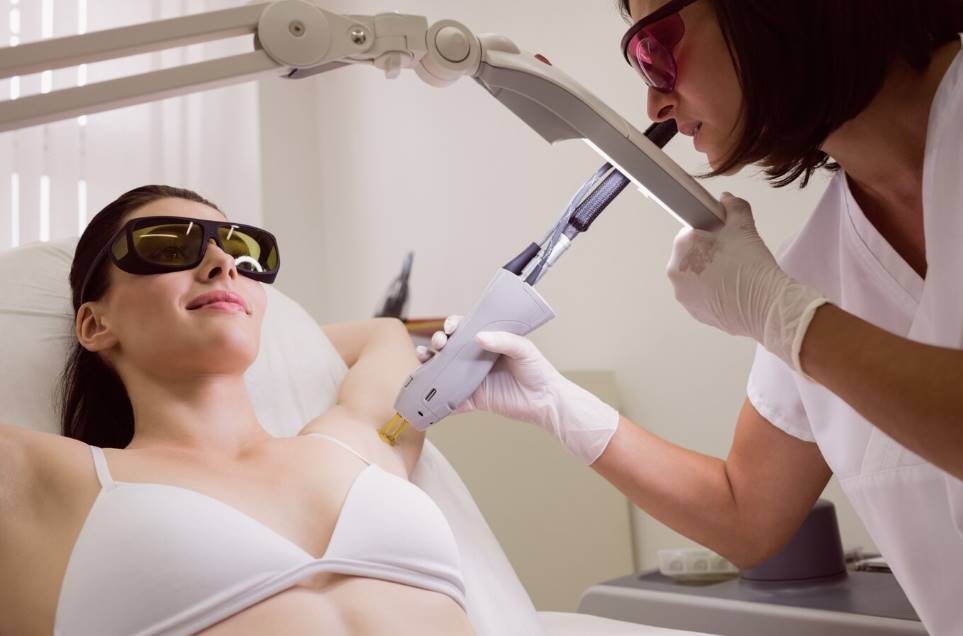
It's Very Precise
How often do you wax or shave and then realise you missed a strip? Then you'll have to repeat either technique, which might be irritating to your skin.
Laser hair removal is both a highly precise technique and one that should only be performed by a skilled professional. The laser will only target the hair and eradicate it with each session. It won't harm your skin in any way while eliminating unwanted hair.
It's Quick
It can take a long time to wax and shave by yourself, even if you're an expert. Even with the help of a professional esthetician, waxing may be a time-consuming process.
Lasers are so advanced that they may remove a number of hairs at once. And the time required for each "zap" is little. If the affected area is quite small, you can schedule a treatment session during your lunch break and still make it back to work in time.
Less Pain
Waxing will almost certainly hurt, although shaving doesn't always (unless you cut yourself). If you despise the idea of pain in any form, you may rest assured that laser hair removal is completely painless.
The worst side effect you might expect is temporary discomfort during the first few sessions. You won't even notice it after the third time. In addition, the technician will likely use a cooling gel, which may be comforting.
Fewer Side Effects
Shaving and waxing can also cause redness and irritation to the skin. It's glaringly clear that you've just gotten out of a salon or finished waxing or shaving your body.
However, there are essentially zero risks associated with laser hair removal. It may cause burning in an extremely tiny number of people, but for most people it will merely cause a temporary flushing of the skin. Applying aloe vera gel might hasten the process of healing.
No More Ingrown Hairs
The follicles, from which hair grows, are targeted by the laser and destroyed. Shaving causes ingrown hairs because it removes hairs from the skin's surface. This danger exists even when you wax.
With laser hair removal, you may rest assured that every hair will be removed from the root, leaving no room for ingrown hairs. This also adds to the absence of post-waxing skin irritation and itchiness.
Your Hair Gets Thinner
The thickness and abundance of undesirable body hair is a major issue. The amazing thing about laser hair removal is that subsequent hair growth will be finer and less dense.
In fact, if you get enough treatments, you may find that portion of your hair disappears permanently. This is not a promise, but it is a nice bonus that may come along with using this method of hair removal. This can save you time and money because you won't need laser treatments there anymore.
You'll Save Money
Laser hair removal may cost more per session, but it ends up saving you money if you do the math.
Think about it: you need to buy razors, shaving cream, and wax if you wax or shave. These hair removal techniques can have an adverse effect on your skin, therefore you may also need to invest in skincare products.
Even if calming lotions are already part of your skincare routine, you may need to add products like witch hazel to help with redness and reduce the likelihood of ingrown hairs.
Take into account the advantages of laser hair removal, then. While there are specific aftercare guidelines to adhere to, no more products or treatments are required. Sunscreen with a sun protection factor (SPF) of 30 or higher is recommended for any outdoor activity. However, that's it!
It's Safer Than Other Methods
It's understandable to be wary of the idea of having a laser passed over your body. But the truth is that it's quite secure! Actually, this method of hair removal is far less dangerous than others.
The technology has been refined over the years, and the person using the laser has received extensive training and has extensive experience. Since it won't puncture your skin, there's no danger of infection. Also, unlike waxing and shaving, it doesn't involve the use of chemicals, thus it shouldn't create any adverse responses.
So, there are essentially zero hazards associated with laser hair removal. If you go somewhere trustworthy, you shouldn't have to worry about your safety.
Types Of Laser Hair Removal Machine

Diode Laser
This model of laser hair removal device is extremely popular. Diode lasers, which emit light at a longer wavelength, are safe to use on people of all skin colours.
Alexandrite Laser
The melanin in your skin is most effectively targeted by this laser's shorter wavelength. Because of this, the Alexandrite laser is frequently referred to be the "gold standard" for this procedure.
Nd:Yag Laser
This laser works well on dark skin. The greater wavelength of light used by Nd:YAG lasers allows them to reach deeper into the skin without harming any of the surrounding tissue.
Ipl (Intense Pulsed Light)
IPL machines, which are not technically lasers, employ broad-spectrum light to destroy hair follicles. When compared to laser equipment, IPL ones typically lack precision. In contrast to laser equipment, however, they tend to be less expensive.
There are benefits and drawbacks to using any specific laser hair removal system. Which device is ideal for your skin and hair will vary from person to person and treatment region to treatment area. Getting advice on which equipment will serve your needs best from a trained professional is essential.
How Many Laser Hair Removal Sessions Will You Need?
Factors such as treatment area size, hair growth cycle, and skin/hair composition all influence how many laser hair removal sessions a person needs. Most patients need a minimum of 6-9 sessions to see significant improvement. However, additional therapies may be necessary for some patients.
Consultations for hair removal involve the practitioner gathering information about the patient, including skin and hair type, treatment area, and desired outcomes. Multiple treatments are required to target hair at different stages of the development cycle, as laser hair removal is only effective while the hair is actively growing.
In order to catch hair in its active growth phase, laser hair removal sessions are often scheduled 4-8 weeks apart. The number of sessions needed can also change based on factors including the individual's hormone levels and the thickness and density of their hair.
After the original treatment plan is finished, follow-up appointments for upkeep may be suggested. With regular sessions, laser hair removal can permanently reduce hair growth and refine skin texture.
How To Prepare For Laser Hair Removal
You should talk to your doctor before getting laser hair removal to make sure you're a good candidate for the procedure. Before getting electrolysis, you should avoid waxing, plucking, and tweezing for at least six weeks. Waxing and plucking only remove the hair's surface layer, whereas the laser goes straight to the roots.
What To Expect During A Laser Hair Removal Treatment?
Consultation
The first step in any hair removal procedure is a consultation with your provider to go over your health background, skin type, and treatment objectives. After you've given the doctor the go light during the consultation, he or she will schedule a patch test to see what laser settings would work best for your skin and hair. To be sure there is no reaction, you should wait between five and seven days after the patch test. If there are no objections, we can move forth with the initial appointment.
Laser Treatment
A handheld laser instrument will be used to directly hit the hair follicles during the operation. A concentrated beam of light from the laser destroys the hair follicle by irradiating the pigment within it.
Sensations
During the procedure, you can experience a cracking or tingling feeling. The level of pain from the laser treatment will be adjusted by your doctor based on your individual pain threshold. Cryo Cooling machines are used in some facilities to fast soothe the skin and make the therapy more bearable.
Duration
The treatment time will be proportional to the size of the region being treated. The upper lip and underarms, for example, may only take a few minutes, while the legs and back may take up to an hour.
Post-Treatment
To minimise post-treatment inflammation, your technician will provide cooling. Minor pain or irritation is possible, but it should go away after a few hours.
Follow-Up Treatments
In most cases, you'll need numerous laser hair removal sessions to see results. Your doctor will suggest a schedule of treatments based on how often your hair grows, usually every 4-8 weeks.
In general, laser hair removal is a fast technique with the potential for permanent hair reduction. Getting therapy from a competent professional is essential for your health and well-being. If you follow the prescribed treatment, you will have the best chance of recovery.
How To Care For Your Skin After Laser Hair Removal?
Taking good care of your skin after laser hair removal will help it heal more quickly and with fewer side effects. Following laser hair removal, this is how to treat your skin:
Protect the treated area from direct sunlight by staying indoors. Wear protective clothes or apply sunscreen with an SPF of 30 or higher if you must go outside.
Maintain a sanitary and dry environment around the treated region to reduce the risk of infection. For at least 24 to 48 hours following treatment, you should refrain from swimming, soaking in a hot tub, or taking a hot bath.
Wearing tight garments can irritate the treated region because of the friction. Clothes that fit loosely should be worn so that the skin may recover and breathe.
Do not use scrubs or exfoliants on the treated region for at least a week following the procedure, since doing so can irritate the skin and reverse the beneficial effects of the therapy.
Apply a calming cream or gel to the affected area to alleviate any pain, swelling, or redness. This can be achieved by applying aloe vera gel or cream.
Listen to your doctor's advice on what to do after your treatment. After your laser hair removal session, they will give you detailed post-treatment skin care advice.
If you follow these guidelines, you'll have a better chance of experiencing a smooth recovery from laser hair removal and fewer side effects.
Conclusion
Laser hair removal is a revolutionary method that targets the follicle, the structure connecting the hair root and causing hair growth. It is a precise technique that should only be performed by a skilled professional, as it does not harm the skin while eliminating unwanted hair. Laser hair removal is quick, as it can remove multiple hairs at once, making it a convenient option for those with small affected areas.
Laser hair removal is painless, with temporary discomfort during the first few sessions and a cooling gel used by the technician. There are no risks associated with laser hair removal, as it only causes temporary flushing of the skin. Ingrown hairs are eliminated, and post-waxing skin irritation and itchiness are minimal.
Laser hair removal also results in finer and less dense hair growth, potentially causing permanent hair loss. This can save time and money by eliminating the need for laser treatments.
Laser hair removal may cost more per session, but it ultimately saves money by reducing the need for additional skincare products. Sunscreen with a sun protection factor (SPF) of 30 or higher is recommended for outdoor activities. Overall, laser hair removal offers numerous benefits for women seeking hairlessness, making it a worthwhile investment.
Laser hair removal is a safe and effective method of hair removal, with no risk of infection or adverse reactions. The technology has been refined over the years, and the person using the laser has extensive training and experience. There are various types of laser hair removal machines, including diode lasers, Alexandrite lasers, Nd:Yag lasers, and IPL (Intense Pulsed Light) machines.
The number of laser hair removal sessions depends on factors such as treatment area size, hair growth cycle, and skin/hair composition. Most patients need a minimum of 6-9 sessions to see significant improvement. Consultations involve gathering information about the patient, including skin and hair type, treatment area, and desired outcomes. Multiple treatments are required to target hair at different stages of the development cycle, and the number of sessions may change based on factors like hormone levels and hair thickness and density.
To prepare for laser hair removal, it is essential to talk to your doctor before getting electrolysis. Before getting electrolysis, avoid waxing, plucking, and tweezing for at least six weeks. During the procedure, you will have a consultation with your provider, a patch test, and a laser treatment. The treatment time will be proportional to the size of the region being treated. Post-treatment, cooling can help minimize inflammation and ensure a smooth recovery.
After laser hair removal, it is important to take good care of your skin to heal more quickly and with fewer side effects. Protect the treated area from direct sunlight, wear protective clothes or sunscreen, maintain a sanitary and dry environment, avoid swimming, soaking in hot tubs, or taking hot baths, wear loosely fitting clothes, avoid using scrubs or exfoliants, and apply calming cream or gel to alleviate pain, swelling, or redness. Listen to your doctor's advice for post-treatment skin care.
Content Summary
- Laser Hair Removal for Women is a comprehensive guide for hair removal techniques.
- Laser technology is a game-changing choice for hair removal.
- This book serves as a passport to laser hair removal technology.
- It provides resources for educated decisions on your hair removal journey.
- Laser hair removal targets the hair follicle, not just the shaft.
- It causes minimal trauma to the follicle, preventing new hair growth.
- After one session, hair regrowth is reduced by 25%.
- Laser hair removal is highly precise and safe when performed by professionals.
- It eliminates hair without harming the skin.
- Laser hair removal is quick and efficient.
- It can remove multiple hairs in one session.
- It's a painless hair removal method.
- Temporary discomfort may occur in the early sessions.
- Laser hair removal has fewer side effects compared to waxing and shaving.
- It eliminates the risk of ingrown hairs.
- Hair becomes finer and less dense with laser treatments.
- Some hair may disappear permanently.
- It saves money in the long run compared to other methods.
- No need for razors, wax, or shaving cream.
- Laser hair removal is safer than other hair removal methods.
- Extensive training and experience ensure safety.
- No risk of infection or adverse reactions.
- Different types of laser machines are available.
- Diode lasers are safe for all skin colours.
- Alexandrite lasers are considered the "gold standard."
- Nd:YAG lasers work well on dark skin.
- IPL machines use broad-spectrum light.
- Consult a professional to choose the right machine.
- The number of sessions needed varies for each person.
- Most patients need 6-9 sessions for significant improvement.
- Laser hair removal targets active hair growth.
- Sessions are scheduled 4-8 weeks apart.
- Follow-up appointments may be suggested for maintenance.
- Preparation involves avoiding waxing and plucking.
- The laser goes straight to the hair roots.
- A consultation includes a patch test.
- Sensations during treatment vary.
- Cryo cooling machines are used to soothe the skin.
- Treatment duration depends on the area being treated.
- Post-treatment cooling minimises inflammation.
- Follow-up treatments are typically required.
- Competent professionals are crucial for successful treatment.
- Skin care after laser hair removal is essential.
- Protect treated skin from direct sunlight.
- Maintain a clean and dry environment around the area.
- Wear loose-fitting clothes to avoid irritation.
- Avoid scrubs and exfoliants for at least a week.
- Apply a calming cream or aloe vera gel to alleviate discomfort.
- Follow your doctor's post-treatment advice.
- Proper care ensures a smooth recovery with fewer side effects.
Frequently Asked Questions
Laser hair removal is a medical procedure that uses concentrated laser beams to target and destroy hair follicles. The laser emits light energy, which is absorbed by the melanin (pigment) in the hair, causing the follicle to heat up and ultimately inhibit hair growth.
Most people describe the sensation as tolerable, often comparing it to the snap of a rubber band against the skin. Modern laser technology incorporates cooling systems to minimize discomfort during treatment.
The duration of a session varies depending on the size of the treatment area. Small areas like the upper lip may take just a few minutes, while larger areas like the legs could take up to an hour.
Achieving permanent hair removal typically requires multiple sessions. The exact number varies based on factors such as hair type, skin color, and the treatment area. On average, you may need 6 to 8 sessions spaced several weeks apart.
Ideal candidates have light skin and dark hair, as the laser targets melanin. However, advancements in technology have made laser hair removal more suitable for a wider range of skin and hair types.
